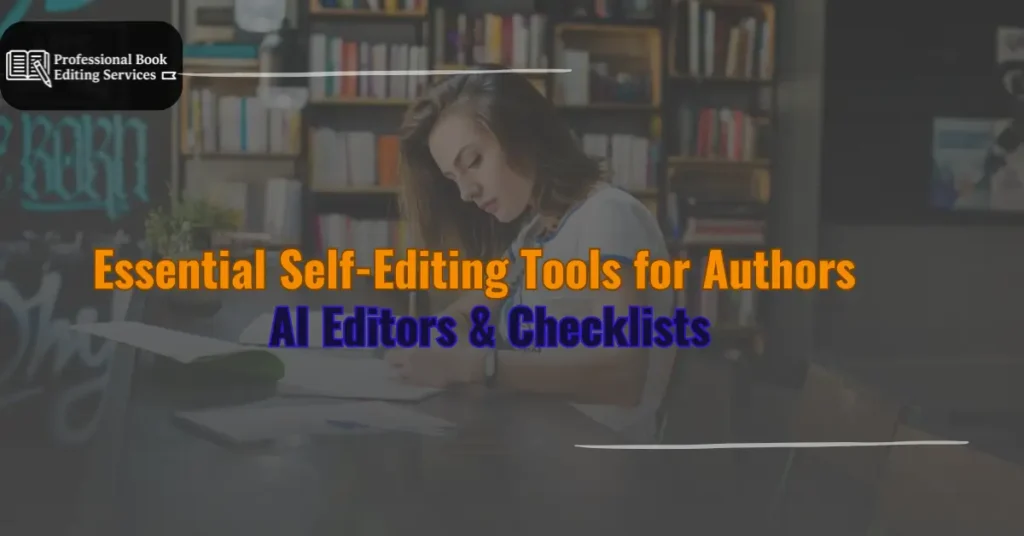A memoir is one of the most personal forms of writing. It reveals moments, relationships, and reflections that shaped a life. But telling a personal story isn’t just about memory. It’s about storytelling. This is where memoir editing comes in: to protect the truth of the writer’s voice while turning lived experience into a meaningful narrative.
Editors work to organize the story in a way that flows, resonates, and invites the reader in. At the same time, they ensure the author’s voice, raw, honest, sometimes messy, remains intact. Memoir is a delicate genre. Too much polish, and it can lose authenticity. Not enough structure, and it may lack momentum. Great editing bridges that gap. Here’s how professionals go about editing for these manuscripts.
Voice Comes First
Voice is the core of any memoir. It’s what separates one life story from another, even if the events are similar. Preserving that voice is a top priority in memoir editing.
An editor begins by listening. They read to hear the rhythms of the writer’s thoughts, the phrases that feel personal, the tone that sets the mood. From there, they guide revisions that strengthen voice without silencing it.
This might mean reducing repetition while keeping emotional weight, refining phrasing without making it sound generic, or reordering sections without changing the story’s meaning.
Unlike fantasy book editing or science fiction editing, where language often leans into world-building, memoir editing keeps its focus on personal tone. Realism is what drives a memoir, and that should show.
Building a Clear Narrative Arc
Even though a memoir is nonfiction, it still needs a story arc. Without structure, even powerful memories can feel disconnected or overwhelming.
Editors help shape the memoir into a journey, with a clear beginning, middle, and end. They identify emotional turning points and arrange chapters to reflect tension, change, and growth. This is where knowing how book editing works becomes essential, because structure isn’t just for fiction.
Sometimes that means suggesting cuts. Not every memory belongs in the final draft. Editors flag scenes that distract from the central theme or repeat what’s already been said. They also help clarify timeline confusion or narrative jumps that may lose the reader.
This structural guidance mirrors techniques used in historical fiction editing and thriller editing, where pacing and progression are critical. In memoir, the stakes are emotional, but the need for flow is just as high.
Clarifying Themes and Emotional Arcs
Memoir often explores broad themes: grief, growth, identity, family, trauma, and resilience. But when every page is filled with personal detail, it can be hard to see the central thread.
Editors step in to clarify those threads. They help the writer see which moments reinforce the theme and which dilute it. They might suggest pulling a moment closer to the start, or letting another scene close a chapter for emotional weight.
Emotion doesn’t just happen. It builds. Memoir editing ensures that the build is steady and believable. Like in YA fantasy editing, where emotional arcs must evolve alongside world-building, memoir needs space for the reader to understand what the writer felt, and why it mattered.
Cutting Without Losing Meaning
One of the most difficult tasks in memoir is deciding what to leave out. Everything feels important to the writer. But the reader doesn’t need everything. They need what serves the story.
Editors help identify what’s essential. That could mean cutting repetitive reflections, background details that don’t connect to the main theme, or scenes that slow the pace.
This isn’t about deleting memories, it’s about highlighting the most impactful ones.
Writers familiar with short story editing often understand this instinctively. They know how to focus a narrative. But for first-time memoirists, guidance is key.
Removing content is never about loss. It’s about sharpening the message.
Maintaining Honesty While Refining Language
Editing doesn’t mean sterilizing emotion. The goal is to refine language without flattening the truth. Editors may tighten syntax, rearrange sentences, or suggest more precise words, but the feeling behind those words stays untouched.
This matters more in memoir than in any other genre. In poetry editing, language often carries symbolic weight. In a memoir, it carries emotional memory.
Editors aim to protect that memory while helping the writer communicate it with clarity. If something reads as guarded or unclear, they’ll point it out, not to challenge the story, but to make sure the meaning gets across.
Trust between writer and editor is crucial. That’s why so many authors benefit from working with experienced beta readers and editors before making big revisions. Feedback offers new perspectives, while editing shapes those perspectives into lasting form.
Organizing the Material
Many memoirs don’t start as linear stories. They begin as journal entries, essay collections, or scattered scenes. Editors help transform those fragments into a cohesive manuscript.
They look at transitions, how one chapter flows into the next, and suggest ways to build anticipation, contrast, or resolution. They also check for continuity in names, places, time periods, and emotional tone.
This organizational work is similar to what happens during nonfiction editing, where clarity is king. Readers can’t follow a story if it doubles back on itself or changes tone without reason.
When a memoir gets disorganized, readers get confused. When it flows, they feel connected.
Knowing When to Hand It Off
While the editor can focus on spotting word choices and structure, if you’re concerned about the typos and grammatical errors you made, there is a way to fix that. Self-editing is a powerful first step. With the help of self-editing tools for writers, many authors can fix passive voice, spelling errors, and overused phrases before bringing in outside help.
But even the most careful writer has blind spots. Emotionally charged scenes, in particular, are hard to evaluate objectively. That’s why professional editing remains essential.
Experienced editors see what the writer can’t. They highlight patterns, ask hard questions, and offer solutions that don’t compromise voice or integrity. It’s not about changing the story. It’s about helping it land with readers.
Even authors who’ve worked in YA book editing, children’s book editing, or self-help book editing find memoir uniquely challenging. There’s no world-building to hide behind, just honesty and structure.
Genre Crossover and Style Shaping
Memoir sometimes overlaps with other genres. A personal story might read like narrative nonfiction, spiritual reflection, or even suspense. Editors help identify these elements and suggest how to amplify them or pull them back.
Writers moving into memoir from genres like romance novel editing, fantasy book editing, or science fiction editing often struggle to let go of plot-driven habits. Memoir is about truth. Editors reframe the manuscript to reflect that shift.
At the same time, memoirs benefit from storytelling techniques. Suspense, foreshadowing, and scene-setting all have a place. Editors teach authors how to use these tools without slipping into fiction.
Conclusion
Memoir is a crafted, intentional story. And shaping that story requires care, experience, and trust. That’s the power of memoir editing: it preserves voice while revealing truth, shapes structure without rewriting life, and polishes language without losing honesty.
A good editor helps organize events, clarify themes, and remove clutter. But most of all, they help the writer stay true to themselves, while also honoring the reader’s experience.
Whether your manuscript is a loose collection of essays or a near-final draft, editing is the bridge between personal story and published memoir. And when done well, it turns a reflective life into a story others will want to read.





